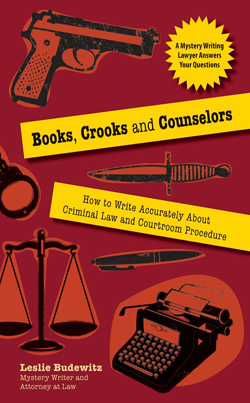Once upon a time, I wrote a book called Books, Crooks and Counselors: How to Write Accurately About Criminal Law and Courtroom Procedure (Linden/Quill Driver Books, 2011), winner of the 2011 Agatha Award for Best Nonfiction. One section discussed medical examiners and coroners, the two types of death investigation in the U.S. Since I had to look up a few details of Washington State’s system recently, I thought you might need a refresher, too.
Remember that terms and laws vary state by state. Whether your state uses a coroner, an ME, or a mix of the two, as Washington does, the role is the same: to investigate deaths as required by state law. As the Washington Association of Coroners and Medical Examiners says: “Coroners and medical examiners use the same forensic death scene investigation process, forensic autopsies, toxicological testing and decedent histories to determine the cause and manner of death, resulting in consistent, professional and high quality death investigations.“
Cause and manner. That’s their focus. In other words, what was the medical cause of death, and was it natural, accidental, suicide, homicide, undetermined, or pending. This summary from Washington’s Snohomish County website gives more detail on the five manners of death and specific considerations for each. Remember that particulars in your story state may vary. Coroners and ME’s don’t investigate the who and why—that’s up to law enforcement, whether it’s local police, a sheriff’s department, or a federal agency.
Coroners may be elected or appointed. In some states, they are independent, while in others, they are part of the country sheriff’s department. Medical examiners are typically medical doctors appointed to the position. Autopsies may be done within the department or done by forensic pathologists employed by a local hospital. Some states, like Montana, have a combined system where the sheriff is also the coroner, although a deputy may take on the primary responsibility, while autopsies and forensic examination are done by pathologists and forensics examiners at the state Crime Lab. How can you find out more about your story state’s system? Start here, with the CDC’s summary of Coroner/Medical Examiner Systems, by State; it also provides links to info for each state. The site also provides additional info that will intrigue crime writers. You might also glean useful details from the National Association of Medical Examiners website, including how to become a medical examiner, the violent death reporting system, and more.
Finally, the U.S. Department of Justice publishes this guide, Death Investigation: A Guide for the Scene Investigator, full of legal and other details for dealing with the body, the scene, medical history, and more.

